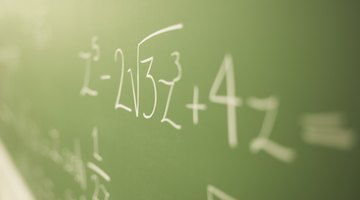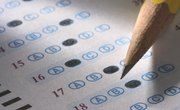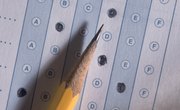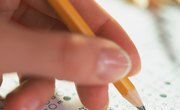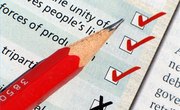The mathematics section of the SAT covers concepts that are taught every day in high school math classes.
Specifically, you can expect questions on:
- arithmetic operations,
- algebra,
- geometry,
- statistics and probability.
But while high school juniors and seniors probably will have already encountered these topics in school, it’s important to brush up on them in advance of test day.
The structure and format of the math questions on the SAT might be unlike any math test you’ve taken in class.
Utilize the Given Formulas
At the beginning of each math section, commonly used formulas are provided for you to reference as you are completing questions.
While it’s best if you have memorized them on your own to save time, knowing that you have them available as a resource is a big advantage if you get confused or nervous.
The questions include both multiple-choice and grid-ins, which require you to write in your own answer.
Calculators are Permitted
Another advantage to the SAT math sections is that you are allowed to use your own approved calculator during the official test.
Acceptable calculators include:
- graphing calculators,
- scientific calculators
- and four-function calculators.
Having your own calculator that you already use on a regular basis can help you to complete questions more quickly and easily.
Tip
Be sure to install fresh batteries shortly before you take the SAT.
And if you don’t have a calculator, you can still answer all questions on the test without one.
Watch Out for Wording
You might not expect your reading skills to be tested on the math portion of the SAT, but reading carefully and paying attention to every word in the question can really enhance your performance on the math.
For example:
You might calculate the area of a square and choose that result as your answer, but the question at the end of the problem asked you to find two times its length.
To avoid doing the correct work but getting the answer wrong, underline all keywords and the specific question you are asked each time you start a new problem.
Tips
1. Show your work on scrap paper for every problem you do. This basic step allows you to avoid careless errors by checking your calculations before penciling in your final answer.
2. While on high school math tests guessing might hurt you, on the SAT an educated guess makes complete sense.
3. If you can rule out even one answer choice on a multiple choice question, statistically the odds are that you should guess.
4. Pay special attention to words such as positive, negative, integer, even and odd that can help you rule out additional answers.
Related Articles
References
Writer Bio
Based in New York City, Kristine Jannuzzi covers arts and culture, food, wine and education. Her articles have been published in “Listen: Life with Classical Music” magazine, “NYU Alumni Magazine” and online. Jannuzzi holds a Bachelor of Arts in journalism and music theory/history from New York University.

